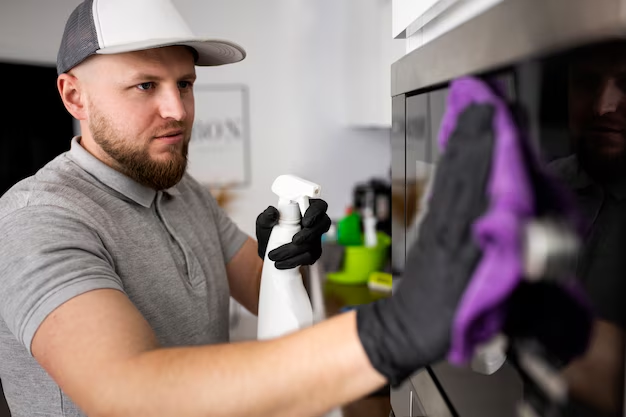Why Is Your Refrigerator Leaking Water? A Comprehensive Guide
Imagine opening your refrigerator and discovering a mysterious pool of water at the base. It’s not just inconvenient, but potentially damaging to your floors and nearby cabinetry. But what does it mean when your refrigerator is leaking water, and how do you address it? Here’s an in-depth look at this common household issue.
Understanding the Basics of Refrigerator Leaks
Refrigerators are complex systems that rely on a delicate balance of processes to function effectively. When part of this system goes awry, leaks can occur. Water leaks are often a signal that something in the refrigeration cycle or maintenance routine needs attention.
Common Causes and How to Identify Them
Clogged Defrost Drain
Often the culprit, a clogged defrost drain occurs when debris or ice buildup obstructs the drain hose.- Symptoms: Water pooling at the bottom of the refrigerator compartment.
- Solution: Unplug the refrigerator, locate the defrost drain (usually found at the back), and use warm water to melt any ice or dislodge debris.
Faulty Drain Pan
The drain pan collects water from the defrost cycle. If it’s damaged, water can escape.- Symptoms: Visible cracks or twists on the pan; water under the fridge.
- Solution: Inspect the pan for damage and replace it if necessary.
Worn Door Seals
Over time, door seals (gaskets) can crack or wear, weakening the airtight barrier. This can cause moisture to build up inside.- Symptoms: Condensation inside the refrigerator; cool air escaping.
- Solution: Clean the seals and inspect them for cracks. Replace if damaged.
Incorrect Temperature Settings
If the fridge is too cold, it can cause excess frost buildup, which can release water.- Symptoms: Ice buildup within the fridge compartments, particularly near the vents.
- Solution: Adjust the settings according to the manufacturer's recommendations.
Water Filter Issues
Improperly installed or clogged water filters can lead to leaks.- Symptoms: Drips near the filter location at the bottom or back of the refrigerator.
- Solution: Reinstall the filter or replace it if it’s old or clogged.
How to Prevent Refrigerator Leaks
Preventing leaks from occurring in the first place is often simpler than fixing them. Regular maintenance and mindful usage pave the way to a leak-free refrigerator.
Regular Cleaning and Inspection
Clean the defrost drain regularly and inspect door seals and water lines for wear and tear.Correct Installation
Ensure that the refrigerator is installed level. An uneven position can cause drainage issues.Maintain Optimal Temperatures
Follow manufacturer guidelines for temperature settings to prevent excessive frost.Timely Water Filter Replacement
Change the water filter according to the instructions to prevent blockage.
When to Call a Professional
While many leak issues can be handled with a bit of DIY effort, certain situations may require a professional’s touch.
- The leak persists despite DIY attempts.
- You suspect the issue involves electrical components or unfamiliar mechanisms.
- The refrigerator is under warranty or you prefer certified maintenance.
Quick Reference Guide for Refrigerator Leak Troubleshooting 🚰
Here’s a handy summary to help quickly pinpoint and address potential causes of refrigerator leaks:
- 🌀 Clogged Defrost Drain: Check for blockage, use warm water to clear.
- 🧊 Faulty Drain Pan: Inspect for cracks, replace if needed.
- 🚪 Worn Door Seals: Clean and replace if damaged.
- 🌡️ Incorrect Temperature: Adjust settings to prevent frost buildup.
- 🚰 Water Filter Issues: Reinstall or replace malfunctioning filters.
By following these easy steps, you can typically resolve or prevent most minor leaks without needing external help.
Exploring Related Concerns
Fridge leaks might not be isolated incidents but rather indicative of broader maintenance needs.
The Impact on Energy Efficiency
Leaky refrigerators can significantly impact a refrigerator's energy efficiency. Escaping cool air means your appliance works harder to maintain temperature, drawing more power and increasing utility bills.
Potential Floor and Cabinet Damage
Over time, consistent leaks can lead to water damage of floors, particularly if they're wood or laminate. Installing a drip tray or barrier under the fridge can help prevent long-term damage.
Is It Time for a New Refrigerator?
Repeated leaks might suggest it’s time to consider a new purchase, especially for older models. Assess the cost of frequent repairs against investing in a modern, energy-efficient appliance.
Advanced Troubleshooting and Maintenance
Certain refrigerator models or recurrent issues might necessitate advanced troubleshooting:
Consult the Manufacturer Manual: Often overlooked, the manual can provide model-specific insights.
Electricity and Coolant Issues: Leave these to the professionals, as handling these components can be risky.
Final Words of Advice
Being proactive about refrigerator maintenance can save both money and hassle in the long run. Addressing small issues before they escalate will keep your kitchen running smoothly. So next time you find yourself mopping up around your fridge, you’ll know just what to do! With these best practices, your fridge will likely reward you with years of leak-free service. 🌟
